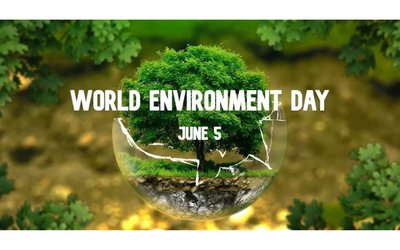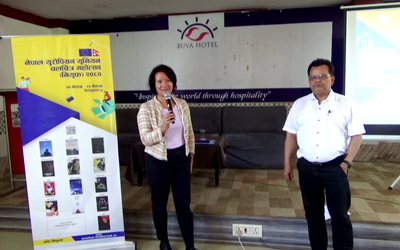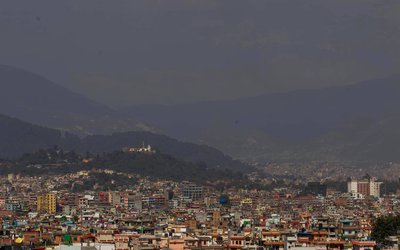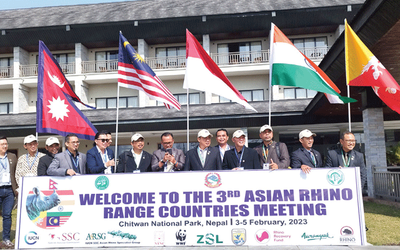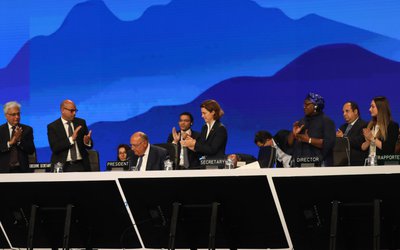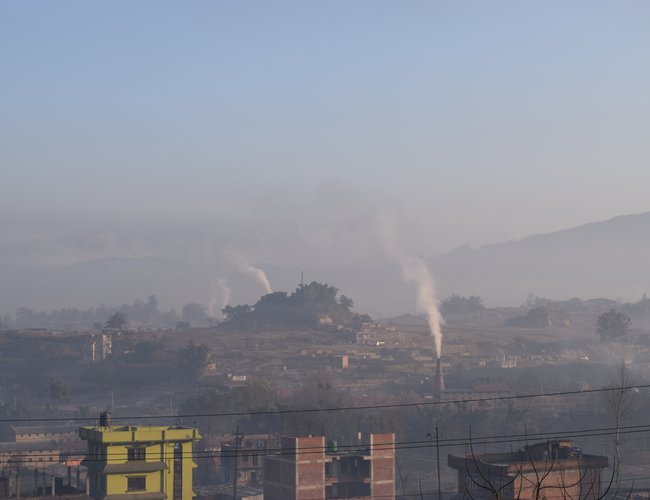
Air pollution in Kathmandu Valley reached worst among the cities across the world on Monday and Tuesday (January 4 and 5 2021).
“This was for the first time the air in Kathmandu Valley has been found to be most polluted following the installation of Real-Time Air Quality Index (AQI) in 2016,” said Indu Bikram Joshi, Acting Director-General of the Department of Environment under the Ministry of Forest and Environment reports The Rising Nepal.
The AQI record crossed 400 on Tuesday within Ratna Park area, which is the most hazardous. In previous years, the air quality index used to be limited to 190 during winter reports The Rising Nepal.
Joshi said that the air was still polluted on Tuesday. The department has also issued a press release altering people not to move outside in the morning and evening without any purpose. The statement asked older people with chronic diseases, including respiratory problem like asthma, cough and COPD to stay indoors.
Air pollution was high in Biratnagar and Nepalgunj after Kathmandu, with over 300 AQI in both cities Monday and Tuesday. The risk of air pollution due to open and waste burning is high during the winter as people often make a fire or burn waste to escape the cold, he said. The government has asked people to stop burning in the open to help control air pollution,” said Joshi
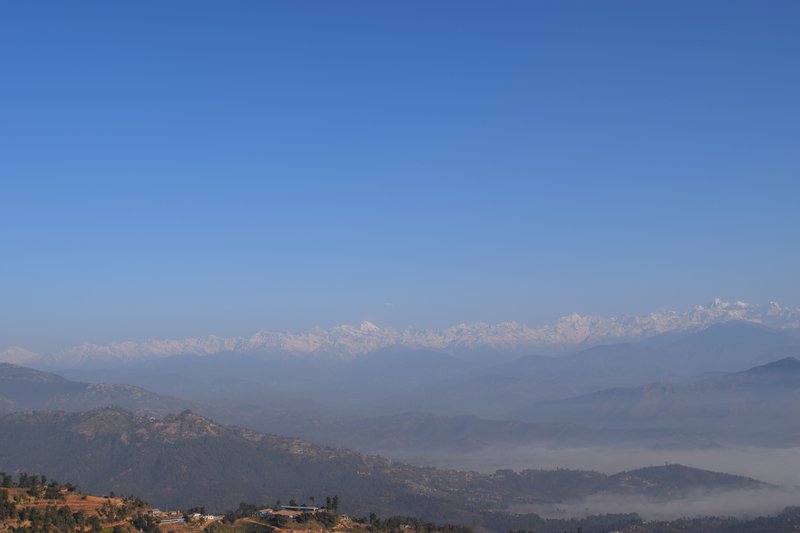
Due to COVID-19, most of the industries, schools and factories remain closed, but the AQI crossing 300 is unbelievable, Joshi said. He also urged people to wear a mask when going out of home.
With winter in the middle and the temperature declining, Nepal’s air quality has started deteriorating, causing a severe threat to COVID-19 patients. As Kathmandu Valley’s urban setting is haphazard and unmanaged, the urban climate emissions include CO2 and short-lived climate pollutants, particularly black carbon and methane also prevailing there.
Inefficient urban land use, housing and building design, inefficient transport systems, and reliance upon fossil fuels, particularly coal, for power, are key urban factors driving CO2 emissions.
Although the movement of people and vehicle has declined, industries are yet to operate fully and the resulting air quality has improved in Kathmandu, it is still not suitable for certain groups such as senior citizens and people with respiratory ailments.
According to Bhupendra Das, Air Quality Specialist at Nepal Energy and Environment Development Services (NEEDS), a non-government organization, the temperature would be trapped during the winter season and dust particles remain suspended in the air, which causes more hazards to the environment.
Winter inversion (layer of cold air trapping warm air), vehicular emission, open burning, and cross-border industrial pollution are the main causes of the pollution in Kathmandu, Das said.
“There should be controls in vehicular movement, industries like brick kilns should embrace clean technology and open burning should be stopped to minimize air pollution in the Valley,” he said.
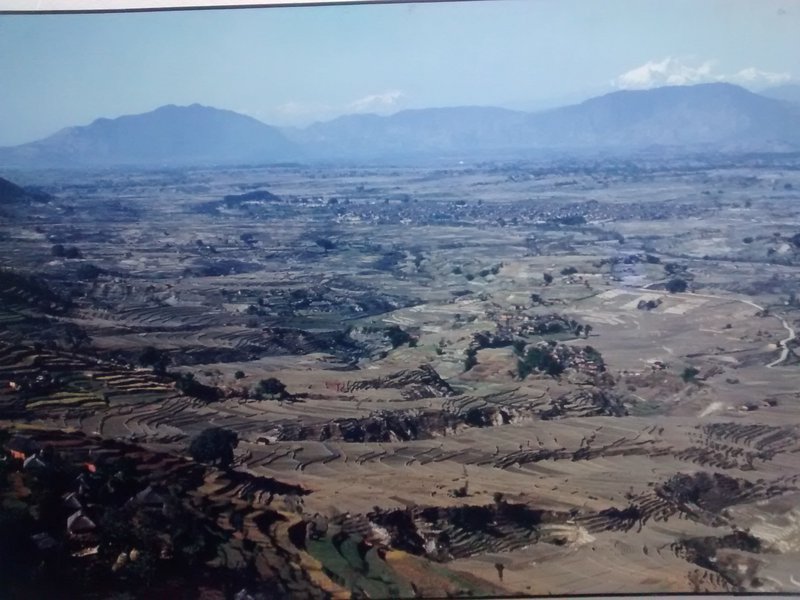
Joshi said that the government has also issued Kathmandu Valley Air Quality Management Action Plan-2020 to ensure the fundamental right of citizens to live in a clean and healthy environment. “The government has been working endlessly to improve the environment of the Valley and other parts of the country and it will surely improve,” he said.
The Action Plan has various objectives including controlling air pollution in the Valley, such as reduction of outdoor pollution generated or emitted by transport and construction sectors, reduction of indoor pollution, awareness-raising about the condition of air pollution, potential impact on public health, developing a decision support system for air quality management in an emergency situation.
The Action Plan also focuses on controlling vehicle emissions by encouraging electric vehicles, and taking steps to better manage construction activities, indoor pollution, industrial emissions, household and agricultural waste in an eco-friendly manner, ensuring environmentally sustainable transport system and awareness campaign.
According to “State of Global Air 2020” (SOGA 2020) report, Nepal is placed among the top 10 countries with the highest outdoor pollution (PM2.5 levels) in 2019.
The World Health Organization’s air quality guidelines stipulate that 24-hour mean PM2. 5 should not exceed 25 μg/m³ and that for PM10 should not exceed 50 μg/m³. These pollutants are five times higher in the atmosphere.
At a time when Kathmandu Valley’s air pollution is getting worse, there is a realization to take integrated actions from different stakeholders. Organized by Ministry of Health and Population (MoHP), Department of Environment (DoEnv), World Health Organization (WHO), Municipal Association of Nepal (MuAN) and Clean Energy Nepal (CEN), a symposium, with local government representatives on air pollution management in Kathmandu Valley, organized via the online Zoom platform, discussed ways to improve the air quality of the valley.
Public Health Administrator for the Country Office of WHO in Nepal, Dr. Khurshid Alam Hyder said that air pollution is one of the emerging health and environment issues.
He said that the quality of air that people breathe is not healthy and exceeds almost five times the WHO recommended value. KMC and LMC have already committed to maintain the air quality within the WHO guideline by joining the Breathe Life campaign.
Addressing a symposium with local government representatives on air pollution management in Kathmandu Valley, he said that WHO has been providing technical support to minimize health impacts of air pollution through research studies and capacity building and will continue to do so in implementing the air quality management action plan.
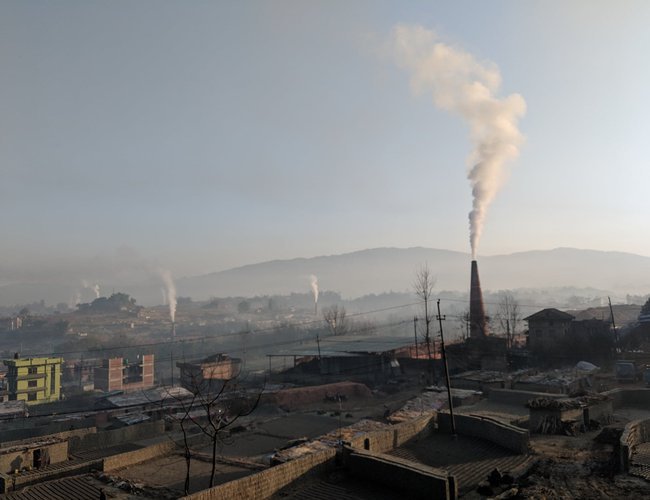
Deteriorating Air Quality
Air Quality Monitoring (AQM) stations placed in 25 places across the country, including seven in the Valley, have shown that particulate matter (PM) 2.5, an indicator of pollution level, is found higher than standard value set for Nepal (40 micrograms per cubic metre), Shanker Prasad Paudel, senior divisional chemist and information officer at the Department, told The Rising Nepal.
According to Paudel, the Department has set two minimum standards for measuring air quality in Nepal -- PM 10 and PM 2.5. The minimum air quality standard for PM 10 is 120 microgram per cubic metre.
According to the record, Ratnapark area measured 75.83 microgram per cubic metre suspended particles in the air under category PM 2.5 on Monday (December 7).
With that value, Kathmandu became the third most polluted city in the country, according to Paudel. From December 3 to 6, Ratnapark’s AQM station recorded PM 2.5 values of 65.52 micrograms per cubic metre, 58.09 micrograms per cubic metre, 62.29 micrograms per cubic metre, and 66.43 micrograms per cubic metre respectively. All of them have exceeded the minimum standard, according to Govinda Lamichhane, environment inspector at the Department.
Seminar Objective
The main objective of the symposium was to discuss the problem of air pollution and its health effects among the representatives of municipalities and addressing the problem of air pollution from their level in the Kathmandu Valley. It was organized under Urban Health Initiative (UHI) as knowledge sharing event with support from WHO.
Focused on the immediate implementation of Kathmandu Air Quality Management Action Plan, 2076 from the local level, around 80 participants joined the program including the Mayors, Deputy Mayors, Chiefs of Environment Sections and health officials of local governments of Kathmandu Valley, senior officials from MoHP, DoEnv, WHO, Academicians and Journalists.
Moderated by the Board Chair of CEN, Bhushan Tuladhar, Chief of Health Coordination Division from MoHP, Prof. Dr. Jageshwor Gautam delivered welcome remarks highlighting the sources of air pollution, degrading air quality of the valley during winter and the inter-linkages of air pollution and COVID-19.
Dr. Gautam shared the efforts of the government of Nepal and municipalities to curb air pollution and concluded his remark saying that: “we must take a holistic and integrated approach to minimize air pollution engaging all the concerned stakeholders.”
Mayor of Dhulikhel Municipality and the President of MuAN Ashok Kumar Byanju said that “integrated planning and effective coordination among all the local governments of Kathmandu Valley is inevitable to control air pollution including maintaining environmental sanitation in the Valley.
In his presentation, Prof. Sanjay Nath Khanal highlighted the causes and scenario of air pollution in Kathmandu Valley by taking reference of latest research findings and suggested the possible measures which can contribute to control air pollution.
Indu Bikram Joshi, DDG of DoEnv, in his presentation highlighted the key features of Kathmandu Valley Air Quality Management Action Plan, 2076 and the role of different stakeholders including the Local Government of the Valley.
Mayors and Deputy Mayors of different municipalities made their remarks in the program where they shared about the problem they are facing and the key initiatives they have taken forward to control air pollution at the local level.
They also highlighted the need of technical and financial resources required for the local level to initiate programs focusing on air pollution including other environmental problems in the Valley and stressed the need of effective coordination among all local governments including the federal and provincial government.
Average particulate air pollution levels are up to 5 times higher than WHO air quality standards, putting many at risk of long-term health problems.
Ground-level ozone, produced by the atmospheric interaction of a mix of air pollutants, including methane and NO2, is another health risk, raising rates of asthma and chronic respiratory illness as well as other sorts of breathing problems and reduced lung function.
A city of medieval palaces and temples, Kathmandu lies in a bowl-shaped valley along an ancient trade route linking India and Tibet. The valley is growing rapidly.
In recent years, air pollution in Nepal has become a serious environmental and public health risk, with pollution levels 4.9 times higher than recommended by the WHO.
Deteriorating air quality in Kathmandu is putting hundreds of thousands of Nepalese at risk of several health problems. In fact, the WHO has consistently found air pollution to be the leading risk factor for death and disability in Nepal.
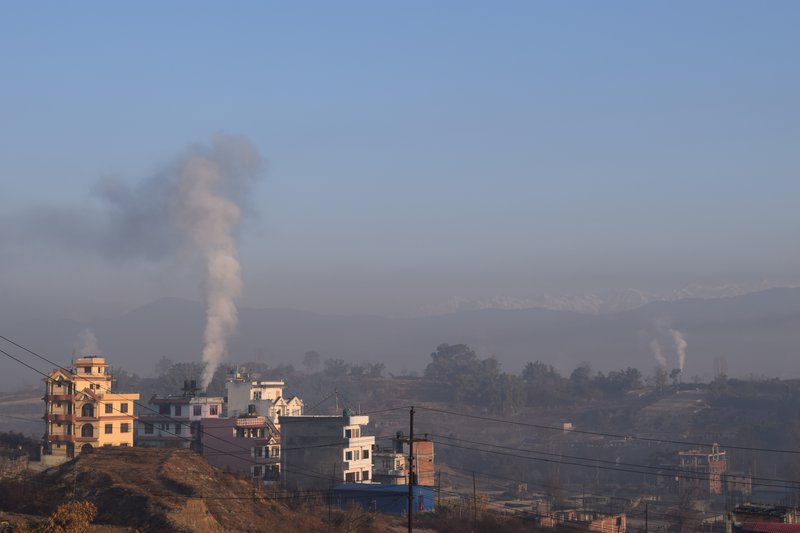
The air quality of the city has been a major public health problem causing air pollution-related morbidity and mortality, placing an economic burden on the country due to loss of productivity and over-utilization of health system resources.
Until recently, there were no air quality monitoring stations in place, which was a major obstacle to mitigation of existing air pollution in the country. There has also been a lack of health impact assessment data to estimate the health and economic burden of air pollution as well as of the sectoral measures needed to tackle this environmental challenge.
In response, the government of Nepal, through its Department of Environment, has established three monitoring sites; two in Kathmandu valley and one in Dhulikhel, and plans to set up a network of air quality monitoring sites throughout the country.
As the first South-East Asian city to pilot the Urban Health Initiative - launched with strong political support - lessons learned in Kathmandu will serve as an example and open the door to air pollution and health mitigation projects in other major Southeast Asian cities facing air pollution problems. Plans are underway to build the capacity of key stakeholders and perform joint multi-sector data analysis.
Outdoor air pollution alone is responsible for 4.2 million deaths annually, mainly attributed to NCDs. Furthermore, physical inactivity is responsible for 3.2 million deaths annually, and traffic injuries cause some 1.3 million deaths annually – both health risks are likely to be much larger among urban populations.
Given such a scenario, the panel discussion involving all different stakeholders to address the air pollution is significant. Director General of Department of Environment Mukunda Prasad Niraula in his closing remarks assured the government’s commitment to strengthen the capacity and regulatory mechanism at local level. Summarizing the discussion, Board Chair of CEN, Tuladhar said that issues discussed will help implement the policies and programs.

Keshab Poudel
Poudel is the editor of New Spotlight Magazine.
- ECONOMY: Growth At 3.3
- Apr 16, 2024
- DPM’s SHRESTHA’S CHINA VISIT High Profile, Low Key
- Apr 14, 2024
- Maha Kumbha In Barahkshetra: A Sacred Festival In Sacred Koshi (Kaushiki) River
- Apr 09, 2024
- LOSS AND DAMAGE: Upper Tamakoshi A Case
- Apr 02, 2024
- Helvetas-Nepal’s InElam Promoting Herbal Oil In Sarlahi
- Mar 31, 2024

